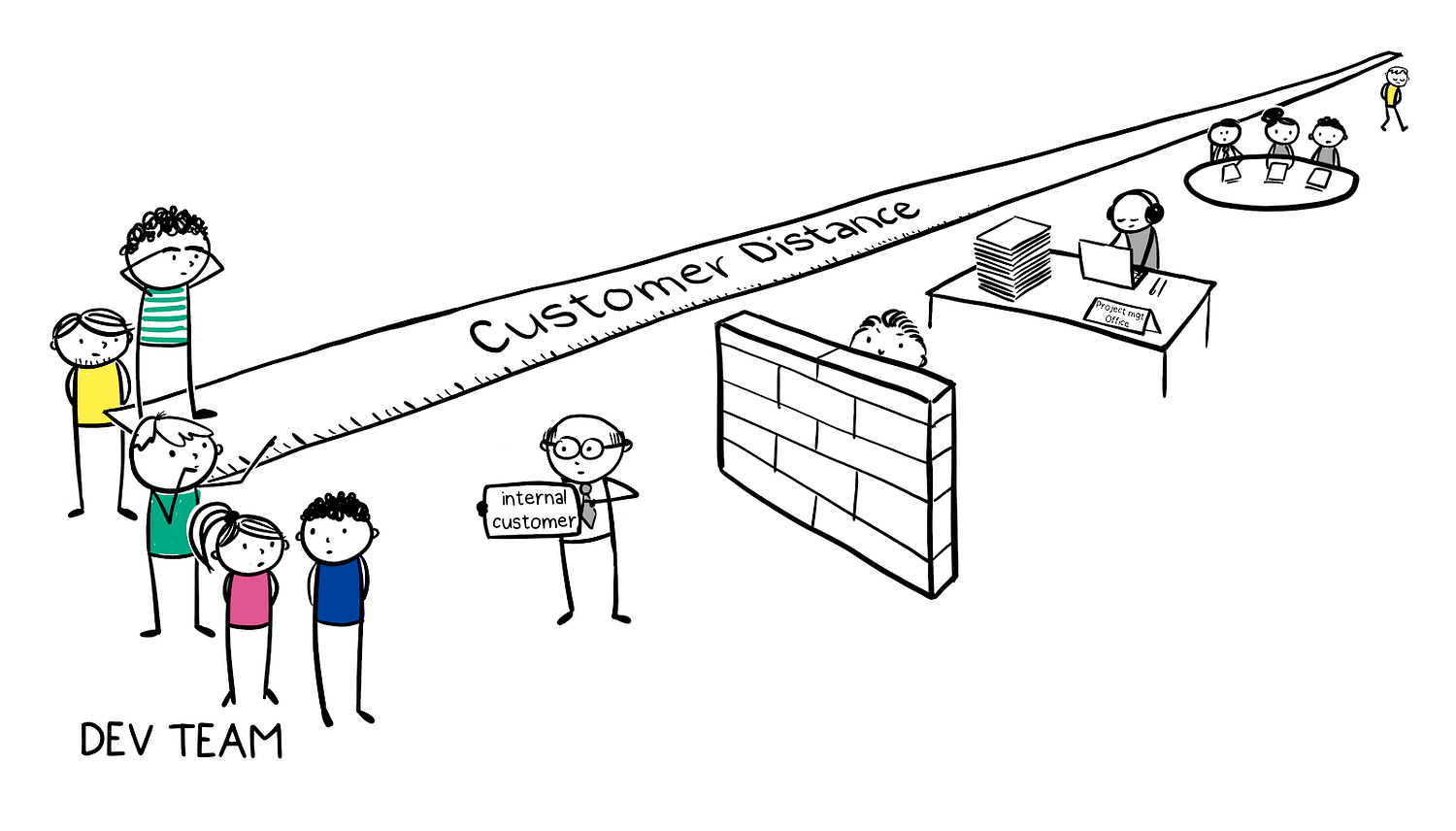An experiment to recover from or prevent Zombie Scrum symptoms in working with stakeholders
This post is an excerpt from the book that we’re writing, the ‘Zombie Scrum Survival Guide’. It’s our way of delivering small increments and involving our stakeholders: you, the reader. So we’d love to hear your feedback, encouragements and wild ideas.
One of the best remedies to start recovering from Zombie Scrum is to start including the voice of your stakeholders. This collaboration allows the discovery of many new and exciting ideas that you would’ve missed otherwise. And the product that emerges from this will be much better for it.
But what are the tangible, practical things you can do to make this happen in environments where this is not something that happens naturally? Our book will offer dozens of experiments that help you get to know your stakeholders and clarify the purpose and vision of your product. The experiments also encourages the involvement of stakeholders in product development and to keep the focus on what is valuable.
In this article, we share an experiment that you can use right away: the Stakeholder Distance Metric. It allows you to measure the distance from the people building the product to the people using or paying for it. Making this distance transparent, can reveal a lot of impediments to agility.
“The Stakeholder Distance Metric helps to measure the distance from the people building the product to the people using or paying for it.”
PS: In case you’re wondering what is meant by ‘stakeholders’ as used within Scrum, check the article “Actual stakeholders? Or just your audience?”. In short, a stakeholder is someone who helps you decide what is valuable to work on next because it’s important to them to get a return on their investment of time and/or money.
Purpose of this experiment
One of the most important things Scrum Masters can do to help organizations improve is to create transparency. Using the Stakeholder Distance Metric is all about creating transparency about the distance between developers and stakeholders, and what happens because of that.
Periodically measuring the distance from the people building the product to the people using or paying for it can reveal a lot of impediments to Agility.
Steps
The Stakeholder Distance Metric tracks the average number of people, departments or roles you have to go through (‘hops’) in order to convey a question or get feedback from someone who is actually paying for the product and/or actively using it:
- Take a selection of items from your Product Backlog that are representative of the kind of work that your team does;
- Taking one item at a time, draw the chain of people, departments and roles you have to go through — or get permission from — in order to test this item with an actual stakeholder — someone who is actively using your product or is investing in it significantly;
- For each hop, come up with a rough estimate for how many hours or days it takes to go through this hop;
- Repeat this a couple of times for different kinds of items. Then, calculate the average number of hops and the average time it takes. For extra effect, you can calculate how much time and money is spent waiting for the chain to complete;
- Write the number of hops and the time it takes clearly on a big board or panel that is visible to all. For extra dramatic effect, you can periodically (re)draw it on the window of your boss’ room like Maya in the movie ‘Zero Dark Thirty’;
- Have a conversation with your team about what the results of this distance are. How is it affecting your team’s ability to work on the right things? How much money and time is being wasted? What is going wrong because of this distance?
Teams that are recovering from Zombie Scrum will slowly lose their fear of stakeholders. So a good way to monitor recovery is to periodically re-calculate the Stakeholder Distance Metric. You can use it to drive conversations during Sprint Retrospectives on how to decrease the distance as much as possible. Many of the experiments in this book can help you do that.
“Periodically measuring the distance from the people building the product to the people using or paying for it can reveal a lot of impediments to Agility.”
Things to Watch Out For
- Metrics don’t have meaning in themselves but are given meaning through conversation. So make sure you have this conversation with your entire team. Don’t use metrics to judge, compare or evaluate teams;
- Shortening the distance to the stakeholder might require you to break an existing, highly elaborate product development process. Depending on your position in the system this might not be possible. See if you can raise awareness for the problem or circumvent the issue by still talking to users and then getting involved in discussions about requirements as early as possible;
“Don’t use metrics to judge, compare or evaluate teams.”
Closing
In this article, we shared an experiment that you can start using immediately: the Stakeholder Distance Metric. It allows you to measure the distance from the people building the product to the people using or paying for it. Making this distance transparent can reveal a lot of impediments to agility. We also briefly introduced some of the other experiments you can consider trying. If you’re interested in learning the detailed steps on how to conduct these experiments.


